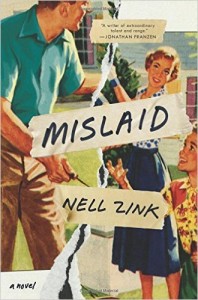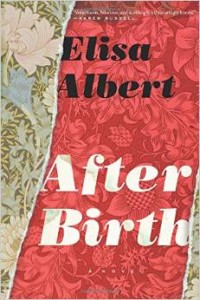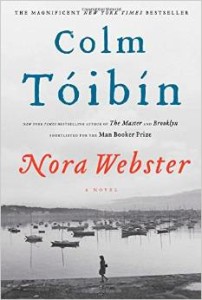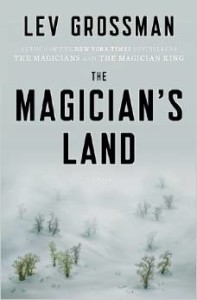It’s been a great summer of books so far. Here is a roundup of six of my most recent reading adventures. With this edition of Some Good Books, I’m introducing a new feature in my book reviews – a rating system. I don’t want to get too competitive with this. I don’t want to hurt any writer’s feelings (I know how it feels!). And most of all, the books that I review are – with perhaps a rare exception – all good books and all worth reading. So I’m going to use a rating system of three, as follows:
© – Good Book, but I wanted it to be even better
©© – Great Book, deeply satisfying
©©© – Amazing Book, dazzling, blew me away
I suspect that most books will be in the ©© – Great Book category, and that only a rare book will be ©©© – Amazing Book, but we will see.
Early Warning, by Jane Smiley ©©
 This second book in Smiley’s trilogy about an American family, following Some Luck, did not disappoint. In fact it was, once again, a distinct pleasure. Like the first book in this series, each chapter is another year in the life of the Langdon family, seen through the experience of one of the extended family members. This volume begins in 1953 with the family now far-flung across the country and only a small handful still left in and around the family farm in Iowa. What was once a nucleus of a family working together to eke out an existence on the land is now a loose collection of related but diverse groups creating their own narratives, including the next generations of the family. Their encounters with the events of the post-war years spin out in a myriad of ways, and yet there are still threads that connect them deeply to each other, often in surprising cross-generational ways. As in Some Luck, Smiley’s writing can at times seem deceptively prosaic, but the powerful beauty of this family tale shines through as the characters move through their encounters with love, loss, deception, desire, vulnerability, and all of that which makes us who we are in a constellation of others.
This second book in Smiley’s trilogy about an American family, following Some Luck, did not disappoint. In fact it was, once again, a distinct pleasure. Like the first book in this series, each chapter is another year in the life of the Langdon family, seen through the experience of one of the extended family members. This volume begins in 1953 with the family now far-flung across the country and only a small handful still left in and around the family farm in Iowa. What was once a nucleus of a family working together to eke out an existence on the land is now a loose collection of related but diverse groups creating their own narratives, including the next generations of the family. Their encounters with the events of the post-war years spin out in a myriad of ways, and yet there are still threads that connect them deeply to each other, often in surprising cross-generational ways. As in Some Luck, Smiley’s writing can at times seem deceptively prosaic, but the powerful beauty of this family tale shines through as the characters move through their encounters with love, loss, deception, desire, vulnerability, and all of that which makes us who we are in a constellation of others.
Mislaid, by Nell Zink ©
 I loved the premise of this book, perhaps even more than the book itself. The title is indeed clever. But where it may disappoint (more on that later), it is still worth a read. The plot is a challenge to the easy binaries that make up our collective narrative. Identity and self-representation, sexuality and race, are all thrown into the mix and stirred together into a murky stew. As an adolescent, Peggy aspires to be a man and believes herself to be a thespian, later corrected to lesbian. So she goes to an all-women’s college in rural Virginia, complete with a deeply metaphoric swampy lake of hidden dread. There she meets an instructor, a louche, penniless gay poet from a local wealthy family. They jump into a sexual relationship, get married, and have two children, a son and a daughter. Because what else would one expect from a lesbian college student and her gay professor (get it, Mislaid??)? Jumping ahead a bit, she leaves him and takes just the daughter with her. The daughter is a blond, wan little girl, but somehow Peggy manages to convince everyone that they are black, so that she can successfully hide their real identities and not get found by her husband. The characters are rich and complex, but without totally spoiling things, I’ll just say that the story gets too easily gift-wrapped up with an unbelievably redemptive happy-ever-after conclusion in which everyone gets let off the hook. Still, definitely lots here to discuss and dissect.
I loved the premise of this book, perhaps even more than the book itself. The title is indeed clever. But where it may disappoint (more on that later), it is still worth a read. The plot is a challenge to the easy binaries that make up our collective narrative. Identity and self-representation, sexuality and race, are all thrown into the mix and stirred together into a murky stew. As an adolescent, Peggy aspires to be a man and believes herself to be a thespian, later corrected to lesbian. So she goes to an all-women’s college in rural Virginia, complete with a deeply metaphoric swampy lake of hidden dread. There she meets an instructor, a louche, penniless gay poet from a local wealthy family. They jump into a sexual relationship, get married, and have two children, a son and a daughter. Because what else would one expect from a lesbian college student and her gay professor (get it, Mislaid??)? Jumping ahead a bit, she leaves him and takes just the daughter with her. The daughter is a blond, wan little girl, but somehow Peggy manages to convince everyone that they are black, so that she can successfully hide their real identities and not get found by her husband. The characters are rich and complex, but without totally spoiling things, I’ll just say that the story gets too easily gift-wrapped up with an unbelievably redemptive happy-ever-after conclusion in which everyone gets let off the hook. Still, definitely lots here to discuss and dissect.
The Sunken Cathedral, by Kate Walbert ©
 The main character in this novel is anxiety, of the particular New York City kind. The many human beings who inhabit this novel are secondary to the free-floating anxiety that runs through the pages of this book. Anxiety about extreme weather, about a changing city and its changing neighborhoods, about the growing gap between the haves and the have-nots, about growing old and isolated in the city, about finding a way to have a meaningful life in the middle of urban anonymity – all these kinds of anxiety run through this tale. And yes, it made of an anxious reading experience. I wanted more – I wanted the characters to rise up out of the anxiety – but they did not. And yet the idea of a mighty city being at the mercy of forces beyond its control, and thereby being reshaped by forces both within (economics and changing demographics) and without (flooding as a result of climate change) are powerful metaphors for aging. The two main characters, Marie and Simone, are French immigrants who survived the war to come to the United States as young women. Close friends who have both now outlived their husbands and launched their children off into the world, they decide to take a painting class. The others who people this book are their neighbors, their children, and those they meet in the painting class. As New York submits to excess water it cannot control, the lives of these two stalwart survivors too are battered by forces outside of their control.
The main character in this novel is anxiety, of the particular New York City kind. The many human beings who inhabit this novel are secondary to the free-floating anxiety that runs through the pages of this book. Anxiety about extreme weather, about a changing city and its changing neighborhoods, about the growing gap between the haves and the have-nots, about growing old and isolated in the city, about finding a way to have a meaningful life in the middle of urban anonymity – all these kinds of anxiety run through this tale. And yes, it made of an anxious reading experience. I wanted more – I wanted the characters to rise up out of the anxiety – but they did not. And yet the idea of a mighty city being at the mercy of forces beyond its control, and thereby being reshaped by forces both within (economics and changing demographics) and without (flooding as a result of climate change) are powerful metaphors for aging. The two main characters, Marie and Simone, are French immigrants who survived the war to come to the United States as young women. Close friends who have both now outlived their husbands and launched their children off into the world, they decide to take a painting class. The others who people this book are their neighbors, their children, and those they meet in the painting class. As New York submits to excess water it cannot control, the lives of these two stalwart survivors too are battered by forces outside of their control.
A God in Ruins, by Kate Atkinson ©©
 This book came highly recommended by someone whose taste in books I respect, and so I dove in. But I admit that I was surprised to like it as much as I did. This story tells the tale of the 20th century through the character of Teddy, first a beloved young boy in England, an aspiring poet, then a pilot in the war, and later as a husband, father, and grandfather. Surprise is indeed a major element in this tale, as Teddy’s life continues to unfold in unexpected ways. Surviving the war, when so many British pilots did not, is one of the main elements that makes Teddy who he is. Having accepted the idea that he might never have a future, he has to figure out how to live in that future. Again and again, he encounters situations he never expected to have to face, and manages to find a way through. There is nothing remarkable about Teddy, yet his kindness and compassion make him a character worth caring about. And then Atkinson plays with us, taking away what she has just given us readers, and poses the very writerly question: what if? What if indeed. That is the question that the writer wrestles with in the privacy of his or her own head, the very core of writing fiction. Writers do not generally expose this question to the reader. But Atkinson puts the question right out there and asks us to wonder along with her: What if…
This book came highly recommended by someone whose taste in books I respect, and so I dove in. But I admit that I was surprised to like it as much as I did. This story tells the tale of the 20th century through the character of Teddy, first a beloved young boy in England, an aspiring poet, then a pilot in the war, and later as a husband, father, and grandfather. Surprise is indeed a major element in this tale, as Teddy’s life continues to unfold in unexpected ways. Surviving the war, when so many British pilots did not, is one of the main elements that makes Teddy who he is. Having accepted the idea that he might never have a future, he has to figure out how to live in that future. Again and again, he encounters situations he never expected to have to face, and manages to find a way through. There is nothing remarkable about Teddy, yet his kindness and compassion make him a character worth caring about. And then Atkinson plays with us, taking away what she has just given us readers, and poses the very writerly question: what if? What if indeed. That is the question that the writer wrestles with in the privacy of his or her own head, the very core of writing fiction. Writers do not generally expose this question to the reader. But Atkinson puts the question right out there and asks us to wonder along with her: What if…
Life After Life, by Kate Atkinson ©©
 This novel came before A God in Ruins, which was written as a companion to it. But I read them the other way around, and so my reading of this one is informed by having read them in this order. The characters in Life After Life are much the same as in A God in Ruins, though with different focus. The novel centers around Ursula, Teddy’s older sister. Teddy himself appears at certain moments, as do other members of their family. But Ursula is the main attraction. Like A God in Ruins, this novel is a tale of the 20th century told through the story of one person, in this case Ursula. Born in 1910 on a snowy night when the doctor can’t through to the house, she is miraculously saved. Or is she? In fact, she dies before she can draw her first breath. Or does she? Throughout her life, Ursula dies, over and over and over, coming to various experiences and ends, or not. Through the life, or lack thereof, of Ursula, Atkinson explores the ideas of chance and destiny, of the impact that one person has on the world and those around him or her, and the question of what can happen if just the slightest change is made in one’s routine. If “a” happens, does it necessarily lead to a life of “b”? But if one can avoid “a”, then can one avoid “b”? One small act can lead to life of utter misery, or even death, while a different and equally banal act can lead to life of joy. It is the eternal question of the road not taken, and an exploration of how one small choice can cause a life to cascade into a completely different future. Though this kind of device could become kitschy or even annoying in some hands, Atkinson manages it masterfully, and creates a captivating reading experience in which it’s hard to put the book down.
This novel came before A God in Ruins, which was written as a companion to it. But I read them the other way around, and so my reading of this one is informed by having read them in this order. The characters in Life After Life are much the same as in A God in Ruins, though with different focus. The novel centers around Ursula, Teddy’s older sister. Teddy himself appears at certain moments, as do other members of their family. But Ursula is the main attraction. Like A God in Ruins, this novel is a tale of the 20th century told through the story of one person, in this case Ursula. Born in 1910 on a snowy night when the doctor can’t through to the house, she is miraculously saved. Or is she? In fact, she dies before she can draw her first breath. Or does she? Throughout her life, Ursula dies, over and over and over, coming to various experiences and ends, or not. Through the life, or lack thereof, of Ursula, Atkinson explores the ideas of chance and destiny, of the impact that one person has on the world and those around him or her, and the question of what can happen if just the slightest change is made in one’s routine. If “a” happens, does it necessarily lead to a life of “b”? But if one can avoid “a”, then can one avoid “b”? One small act can lead to life of utter misery, or even death, while a different and equally banal act can lead to life of joy. It is the eternal question of the road not taken, and an exploration of how one small choice can cause a life to cascade into a completely different future. Though this kind of device could become kitschy or even annoying in some hands, Atkinson manages it masterfully, and creates a captivating reading experience in which it’s hard to put the book down.
The City of Devi, by Manil Suri ©©©
 Looking for a Bollywoodesque post-apocalyptic novel set in India complete with Hindu gods and goddesses as well as superheroes (and if you’re not, why aren’t you?!)? Look no further. Just want a great, absorbing book with compelling characters and an unusual plot? This won’t disappoint. This volume, the third in Suri’s trilogy based on Hindu deities, manages to combine both absurdly, almost comically, exaggerated and deeply universal human elements. Told from the point of view of two very different but (as it turns out) related characters, this moving tale unfolds after havoc has been wrecked on the civilized world. A 9/11-like event has occurred on an international scale, creating worldwide instability. Unfettered capitalism, power grabs, religious-based and political-based terrorism, and the undoing of the technological infrastructure have combined to create a desperate situation in which two strangers, Sarita and Jaz, both set out to search for their missing loved one, becoming entangled along the way. Beyond its over-the-top backdrop and its frenetic pace, at its core this is a story of love, survival, and the universal need to create connections.
Looking for a Bollywoodesque post-apocalyptic novel set in India complete with Hindu gods and goddesses as well as superheroes (and if you’re not, why aren’t you?!)? Look no further. Just want a great, absorbing book with compelling characters and an unusual plot? This won’t disappoint. This volume, the third in Suri’s trilogy based on Hindu deities, manages to combine both absurdly, almost comically, exaggerated and deeply universal human elements. Told from the point of view of two very different but (as it turns out) related characters, this moving tale unfolds after havoc has been wrecked on the civilized world. A 9/11-like event has occurred on an international scale, creating worldwide instability. Unfettered capitalism, power grabs, religious-based and political-based terrorism, and the undoing of the technological infrastructure have combined to create a desperate situation in which two strangers, Sarita and Jaz, both set out to search for their missing loved one, becoming entangled along the way. Beyond its over-the-top backdrop and its frenetic pace, at its core this is a story of love, survival, and the universal need to create connections.
Coming Up…
Looking forward, the Man Booker Longlist was recently announced. My next edition of book reviews will focus on titles from that collection. So far, I’ve read 2 and they have been quite good indeed. In the meantime, happy reading.











































